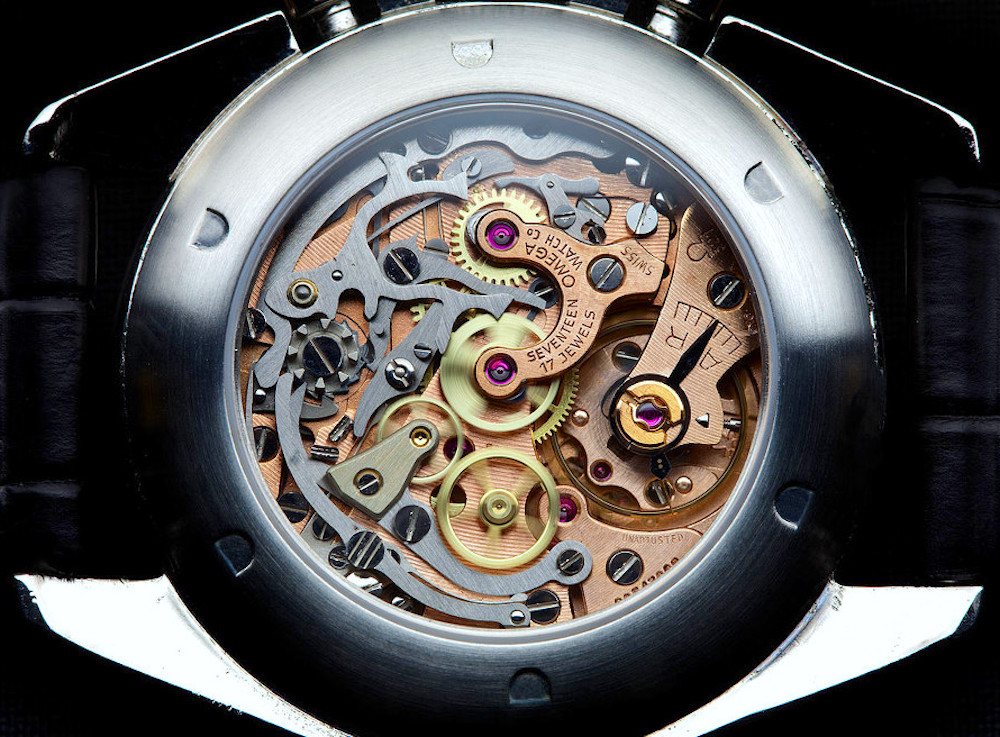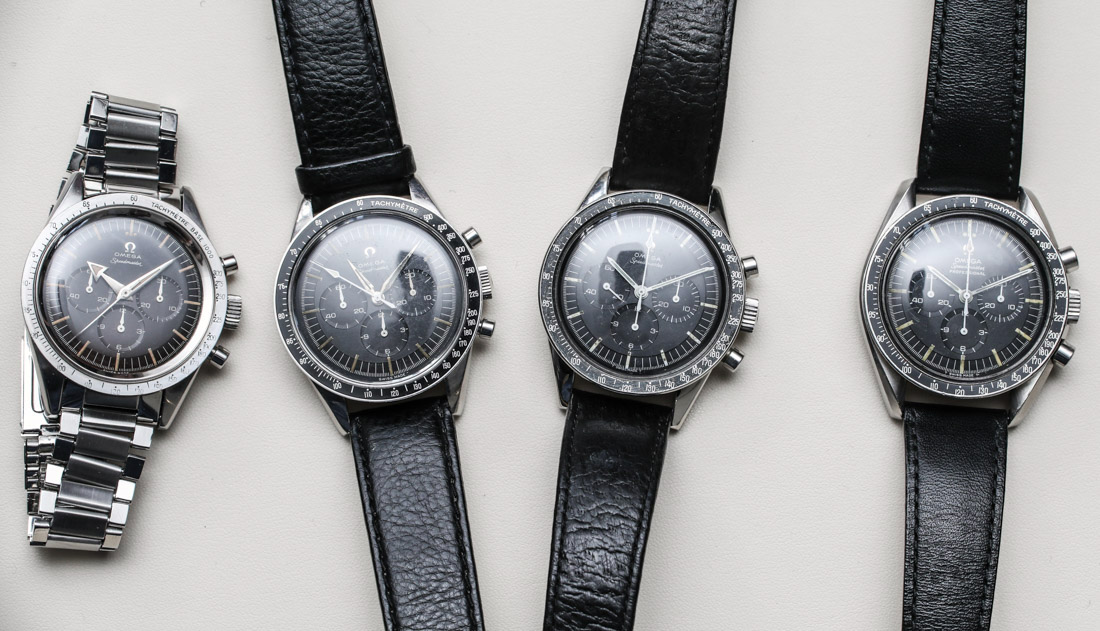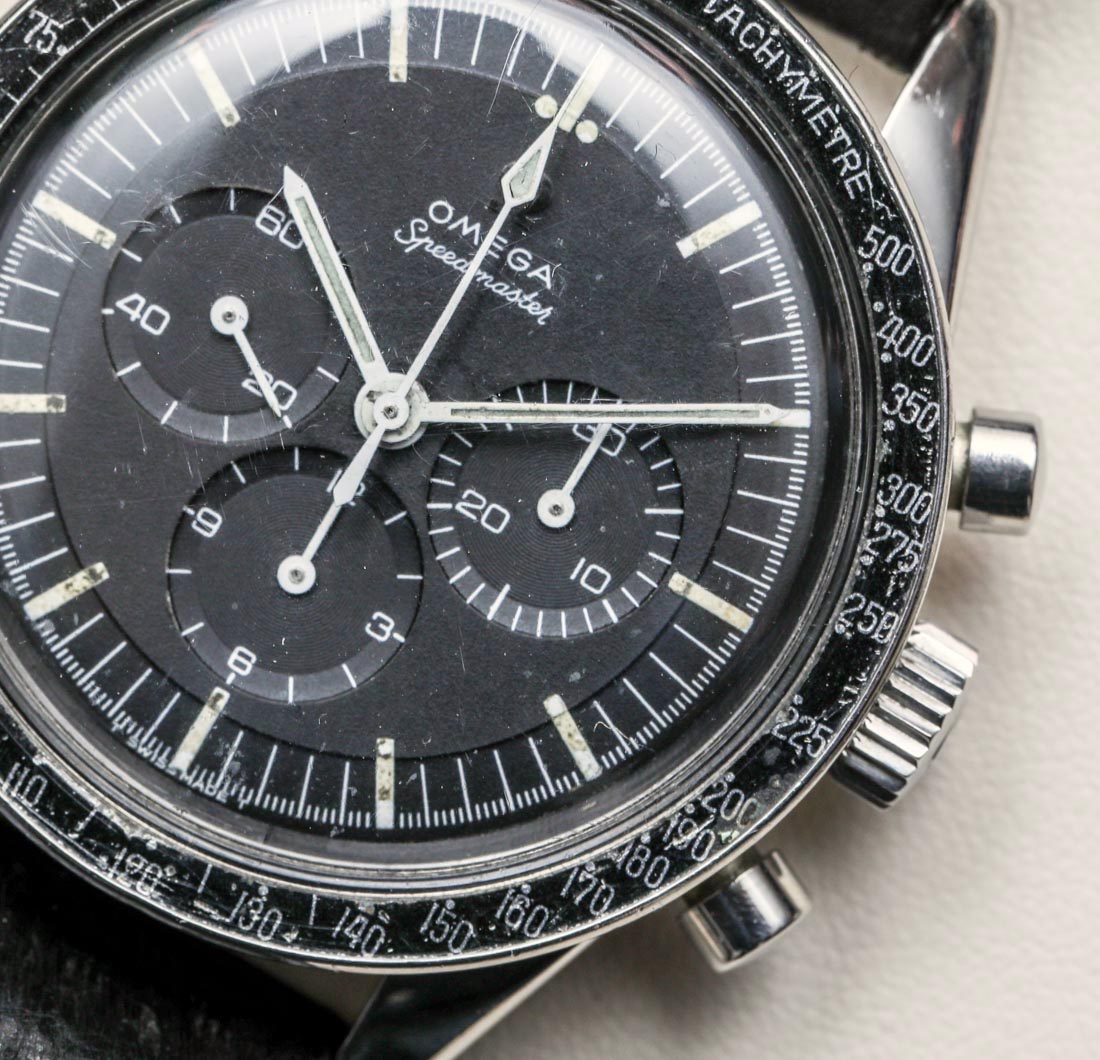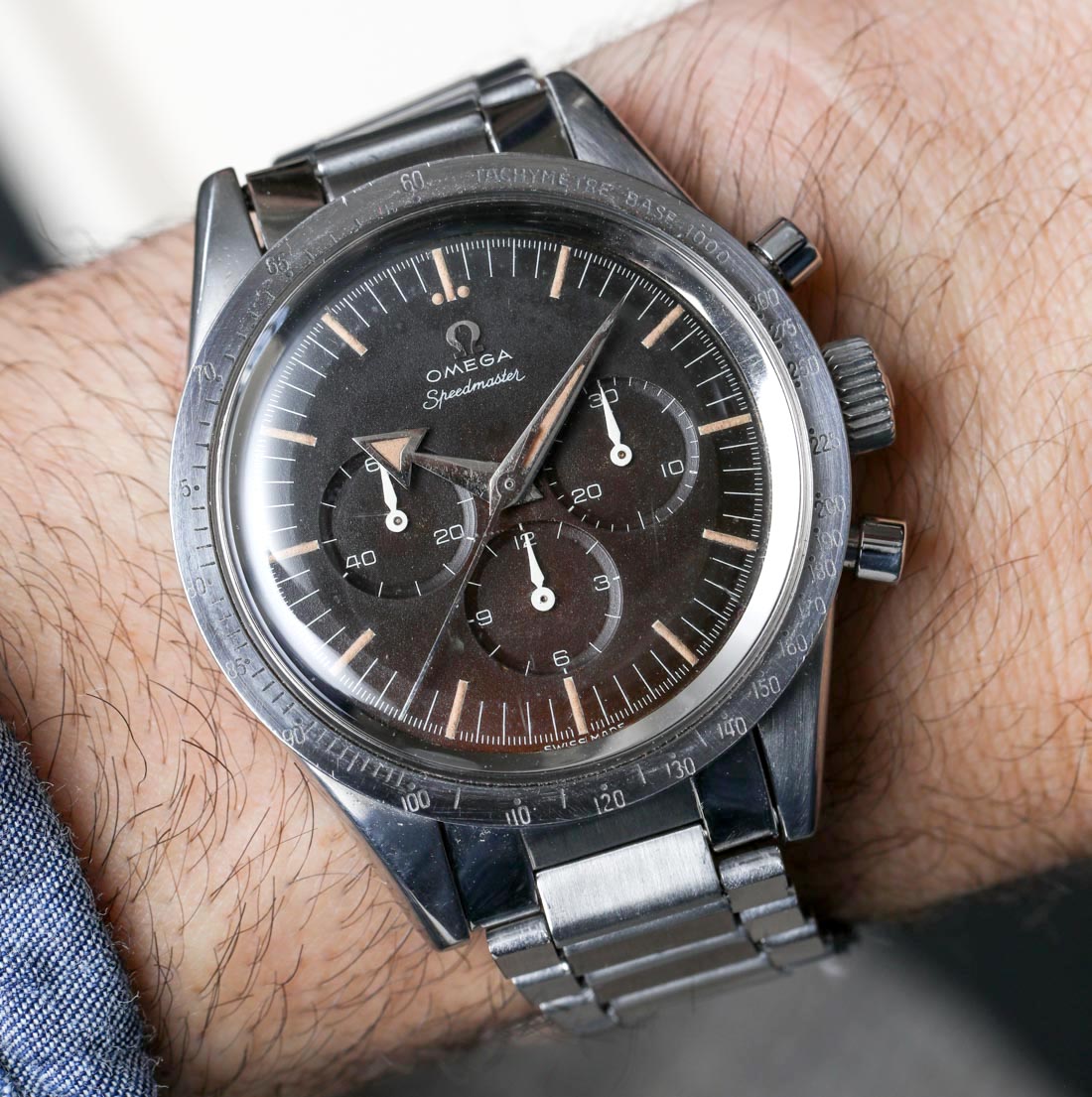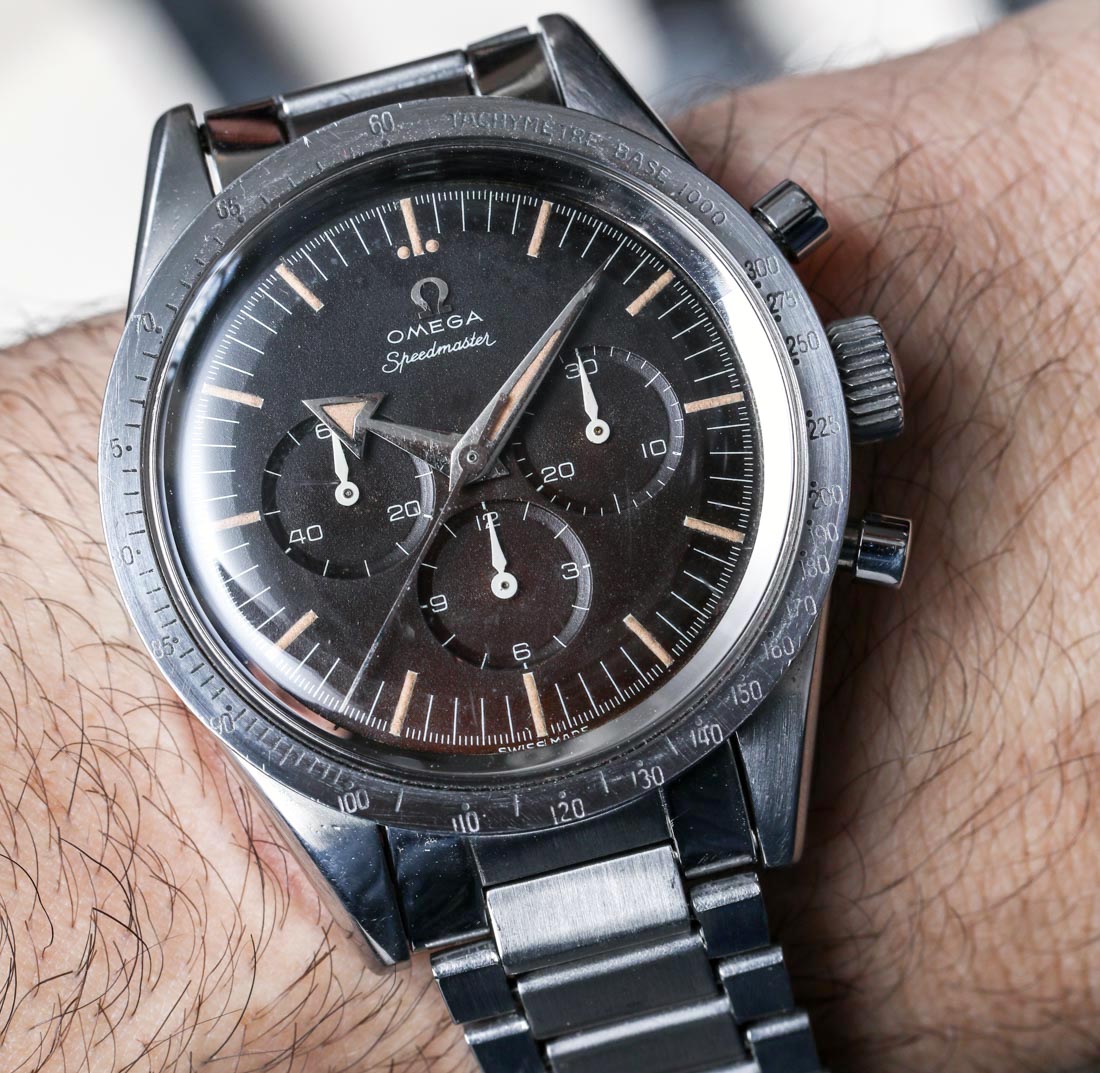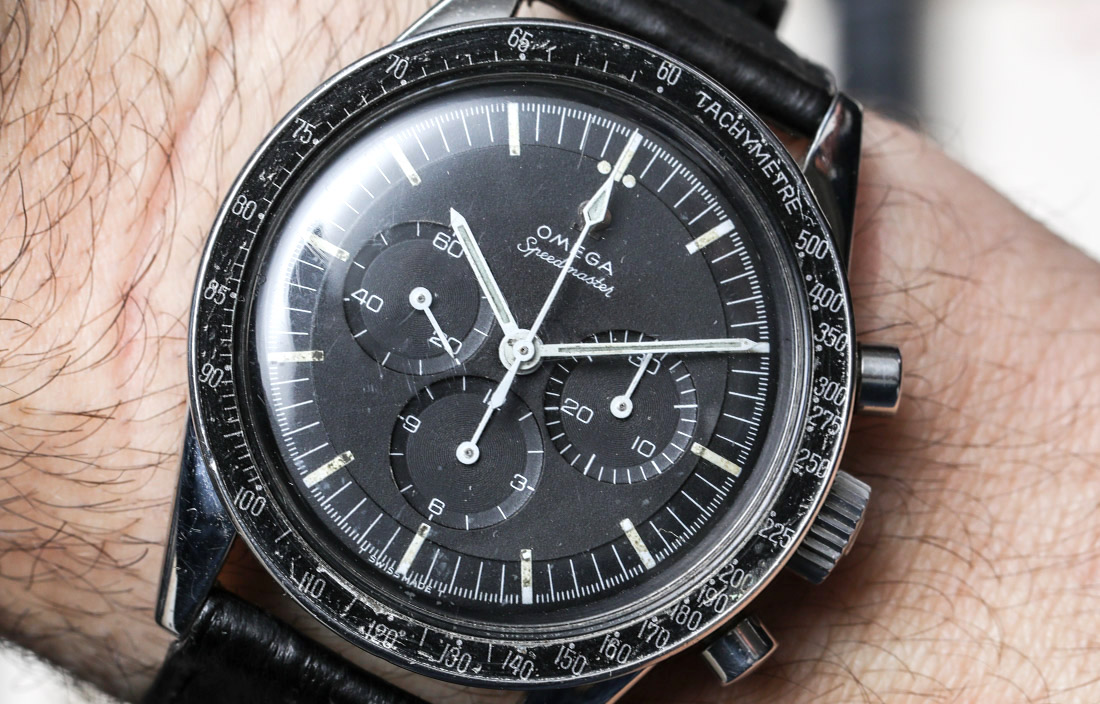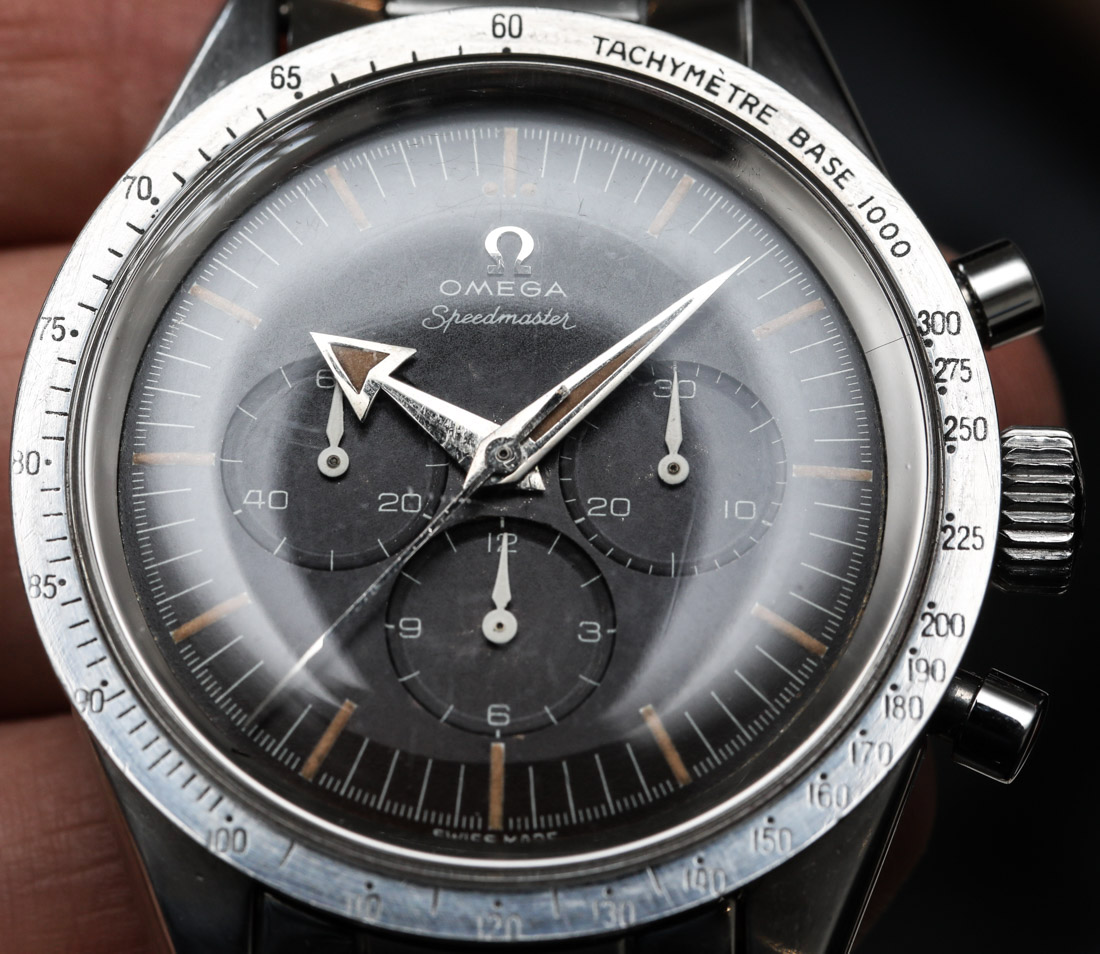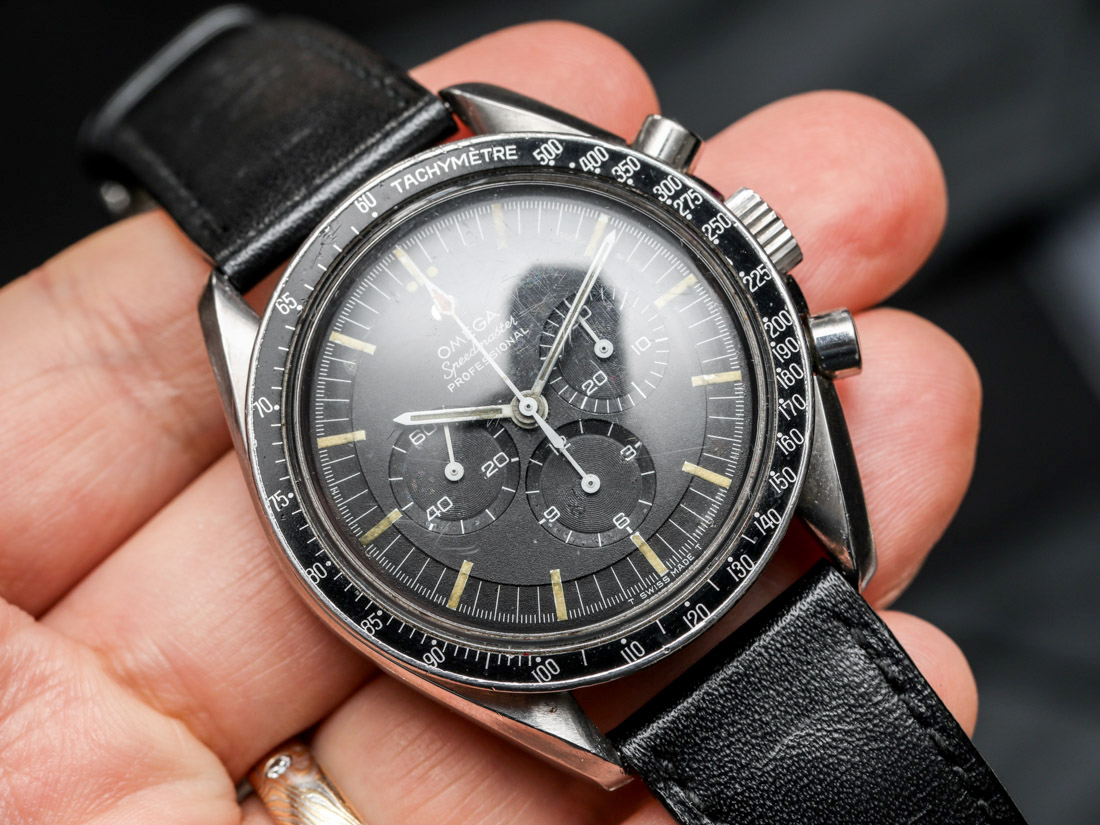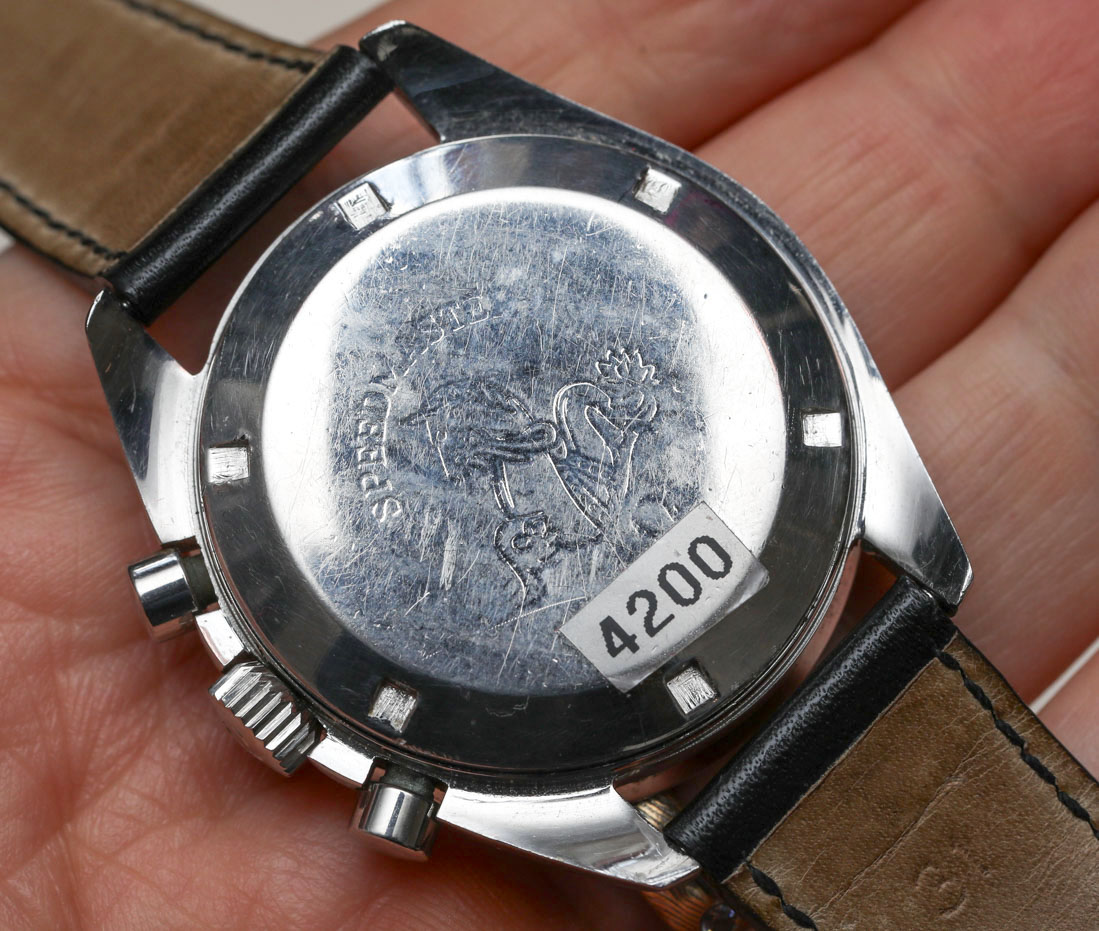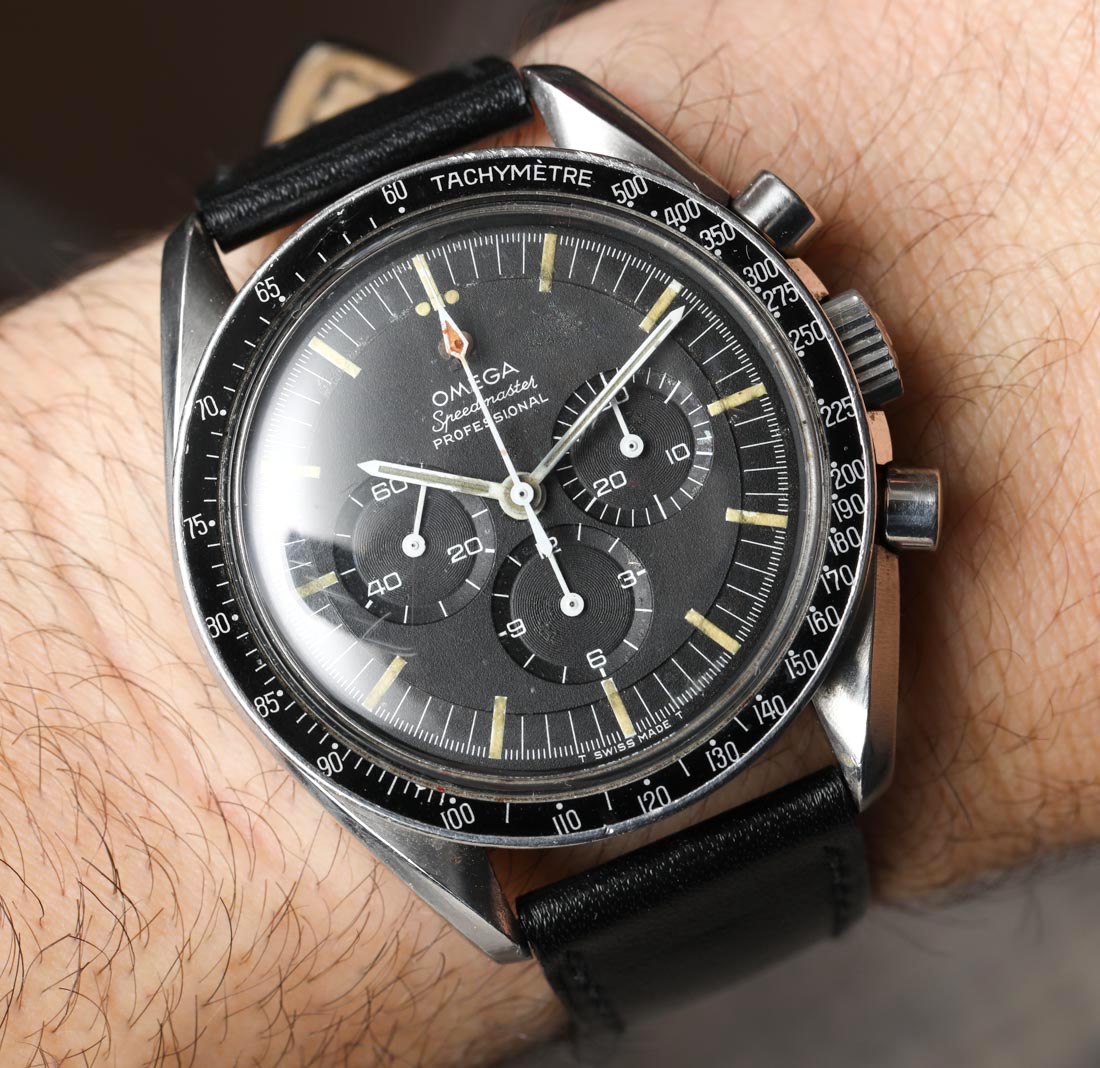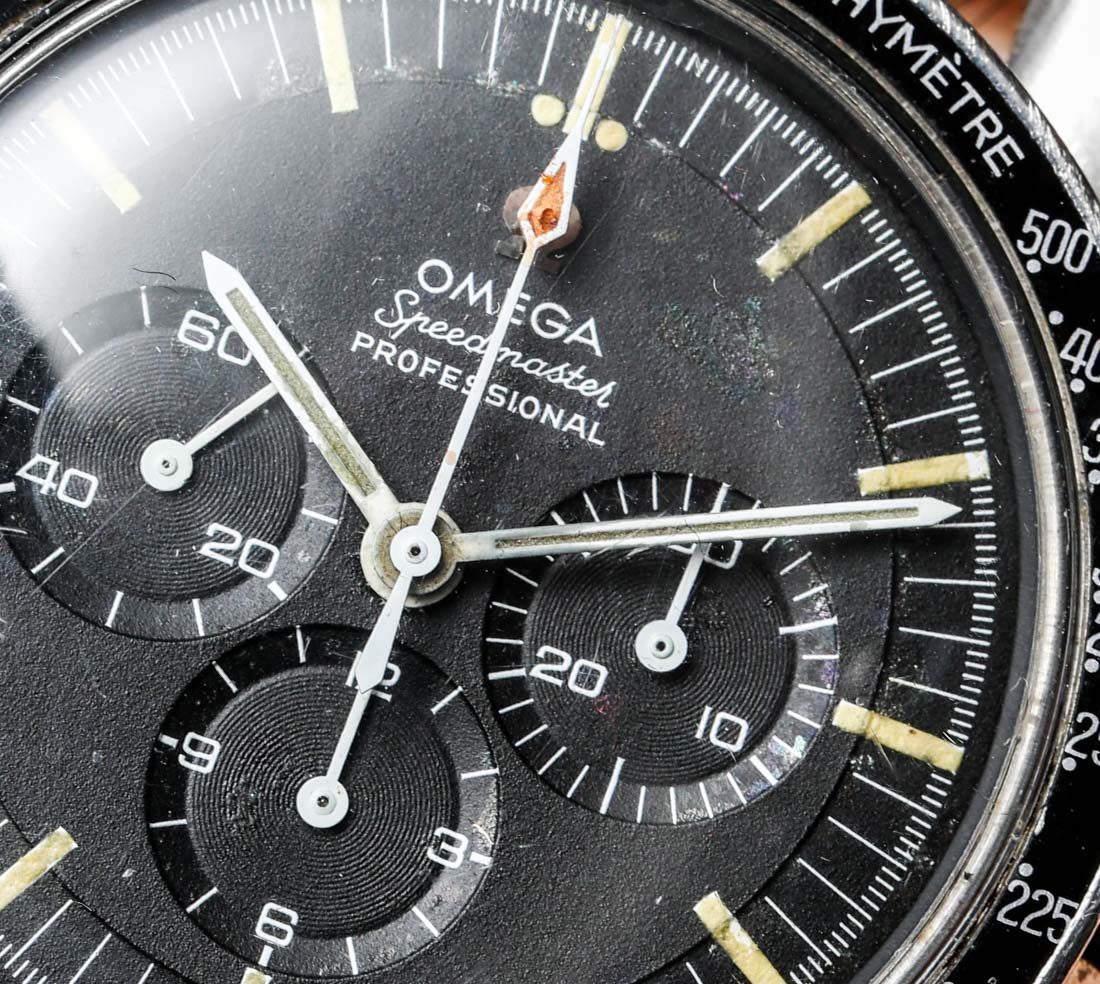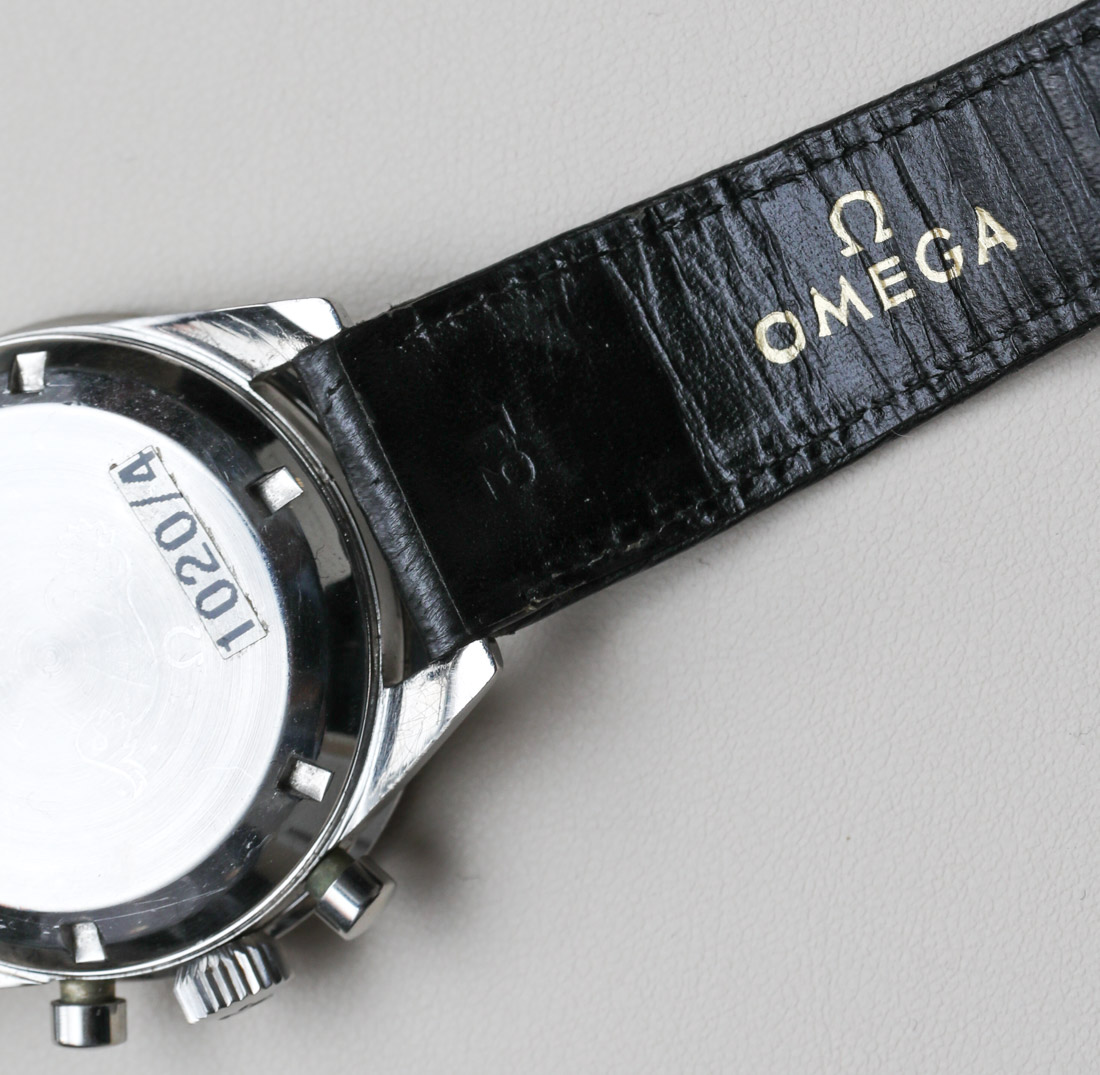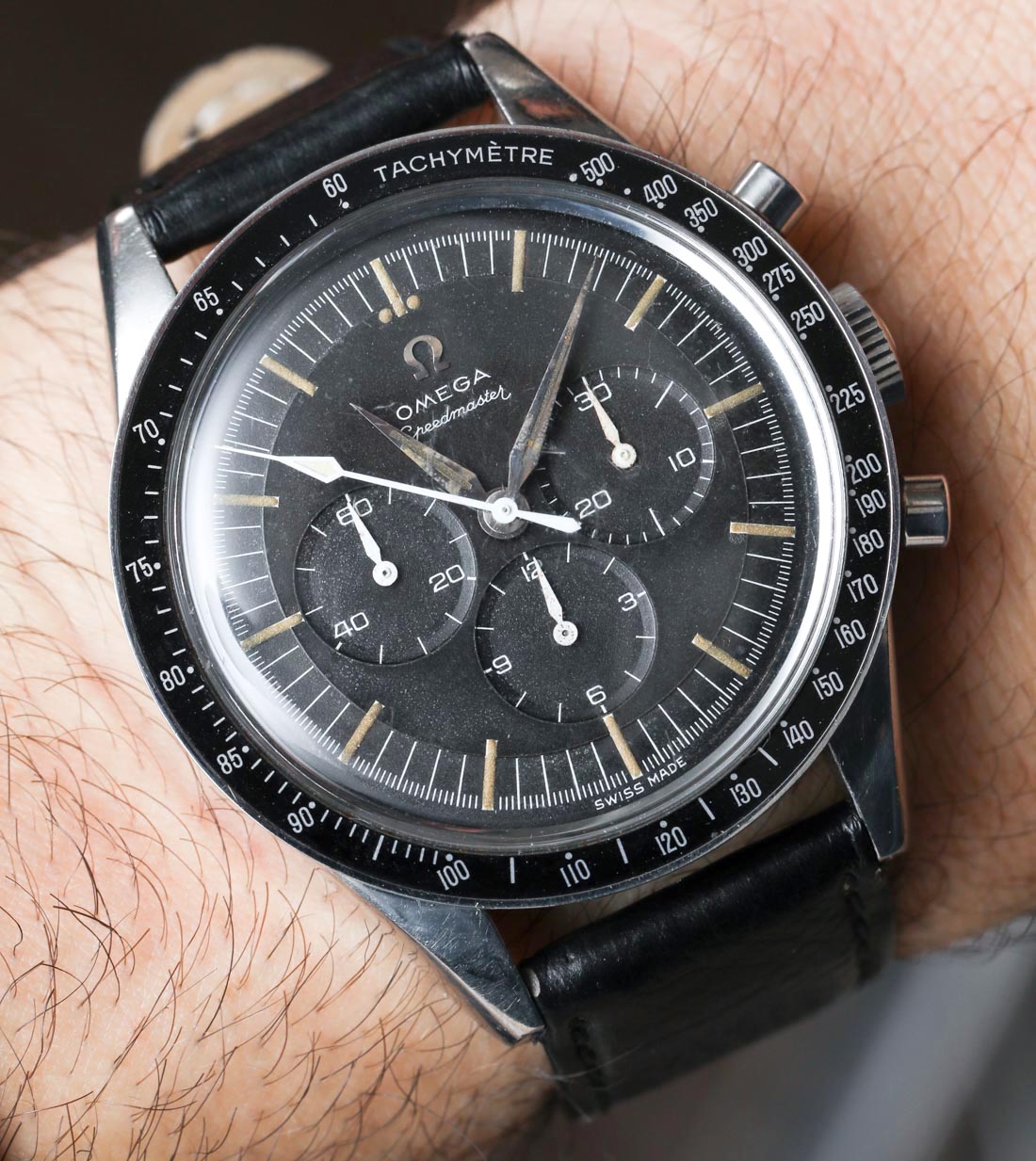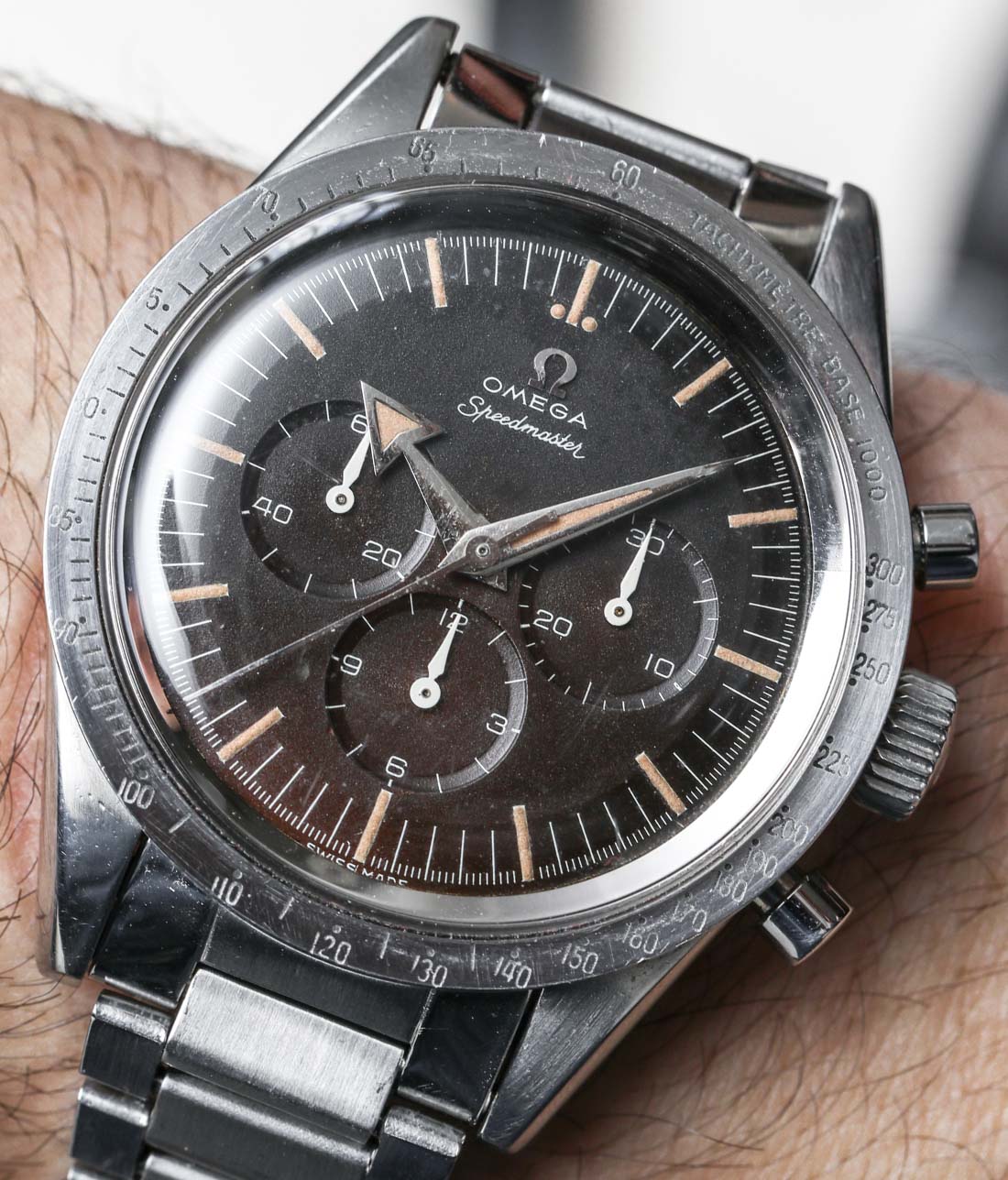Caliber 321
This is a good time for us to briefly talk about the Caliber 321, this quite remarkable movement we have referenced a few times as we looked at these storied watches. Although the calibre 321 was the first movement ever used in the Speedmaster, it had, in fact, been previously used in some of Omega’s other chronographs, namely those in the Seamaster collection.
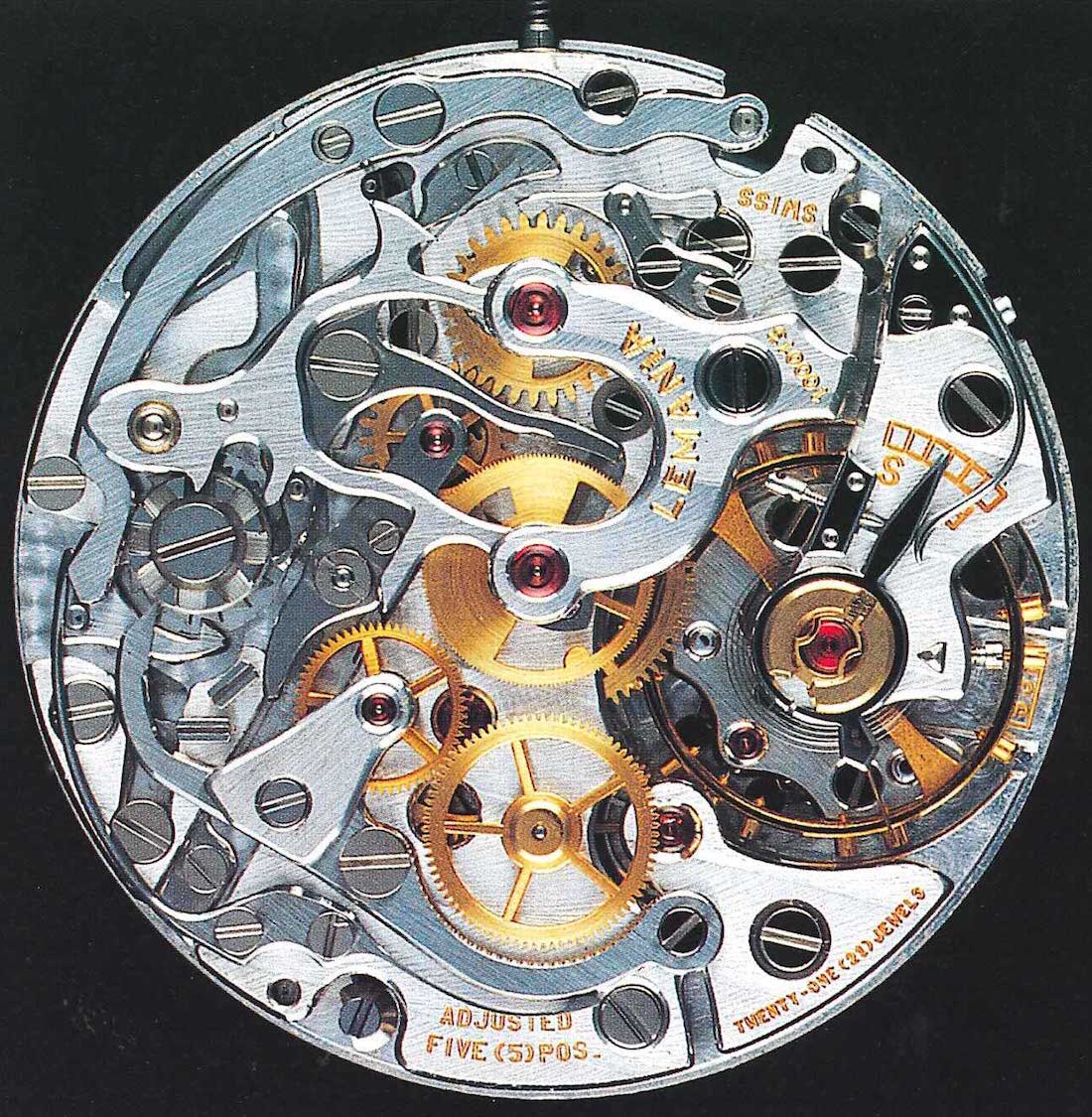
The engine inside many watches competing in an entire different segment – and yet extremely close to the 321: the Lemania CH27.
The Omega Caliber 321 is based on the Lemania 2310 that was developed under project name Lemania 27CHRO C12 by Albert Piguet and Jacques Reymond in the early 1940s as a small, 27mm chronograph with a 12-hour register. The end result has turned into a remarkable caliber that went on to power – in some modified shape or form – chronographs of Patek Philippe, Audemars Piguet, and others.
The Omega Caliber 321 has a column-wheel-operated chronograph and a variable moment of inertia balance wheel beating at 18,000bph. It has powered the Omega Speedmaster from 1957 to 1965 and the Speedmaster Professional from 1965 to 1968.
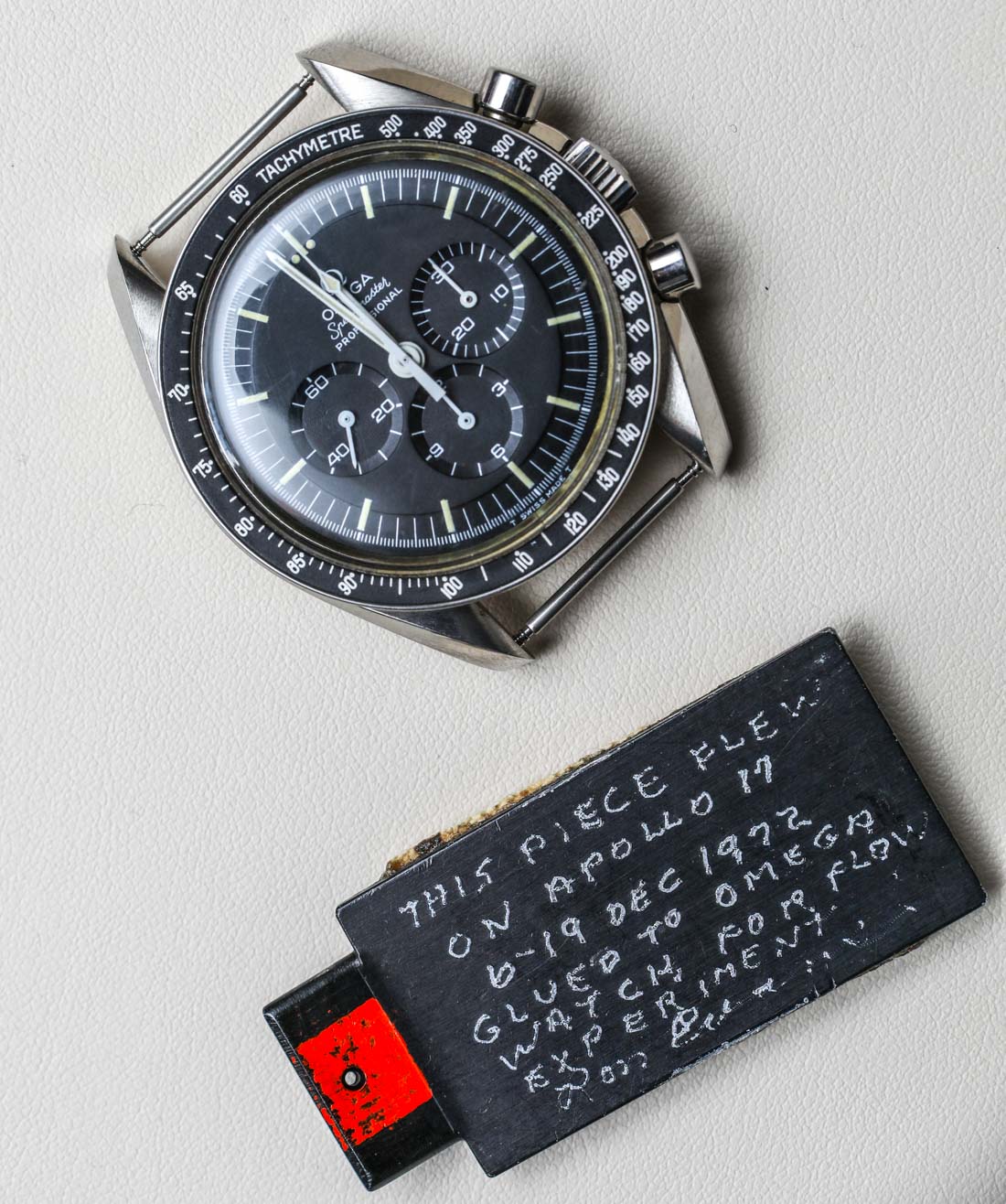
A New Movement Tried On Apollo 17: Omega Speedmaster ST 145.022 With Caliber 861 (1968)
Presented at the event, this specific watch was not on display on a strap but rather alone, with only spring bars attached. The story of this specific watch is that during Apollo 17, just like on all Apollo missions, several scientific experiments were carried out by the astronauts. An experiment called “Heat Flow Experiment” was performed during the orbits of the Apollo 17 Spacecraft around the moon. To time this experiment, this very Speedmaster was separately and privately provided and was used to time the Heat Flow Experiment by Ron Evans during the lunar orbits of the Apollo 17 mission.
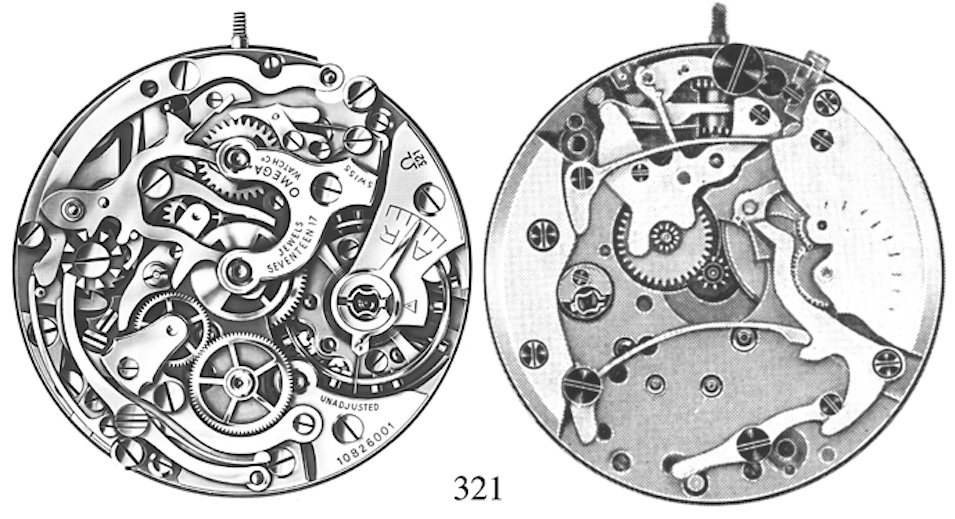
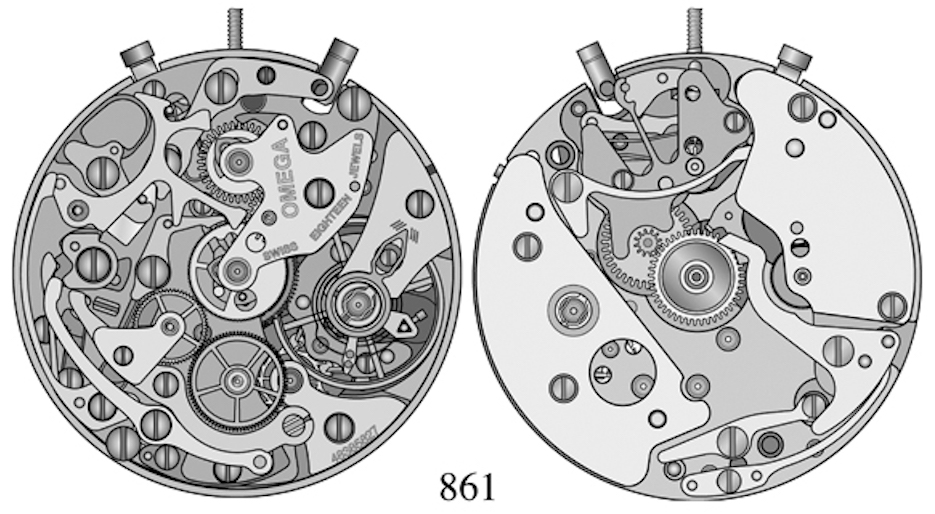
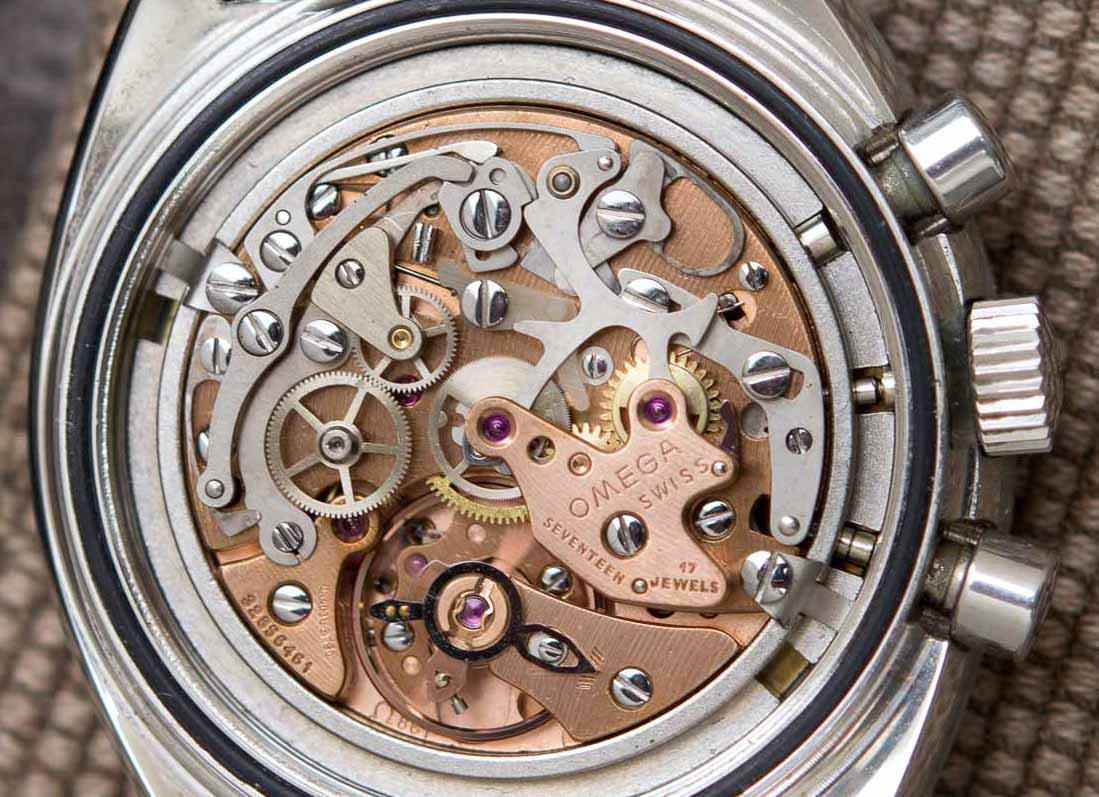
Above: see the 861 replace the column wheel with cams on the lefthand side, source: Omega. Third: Omega Caliber 861 inside a Speedmaster Mark II. Source: fratellowatches.com
Inside of this particular Omega Speedmaster ST 145.022 is the then-new Caliber 861; not just the successor of Caliber 321, but the movement that, with some modifications, powers the Speedmaster Moonwatch to this very day. First, the 861 upped the frequency from 18,000vph to 21,600, making the Speedmaster more accurate in the long term. Second, the 861 replaced the 321’s column wheel with a shuttle cam system, making the movement easier and more economical to produce.
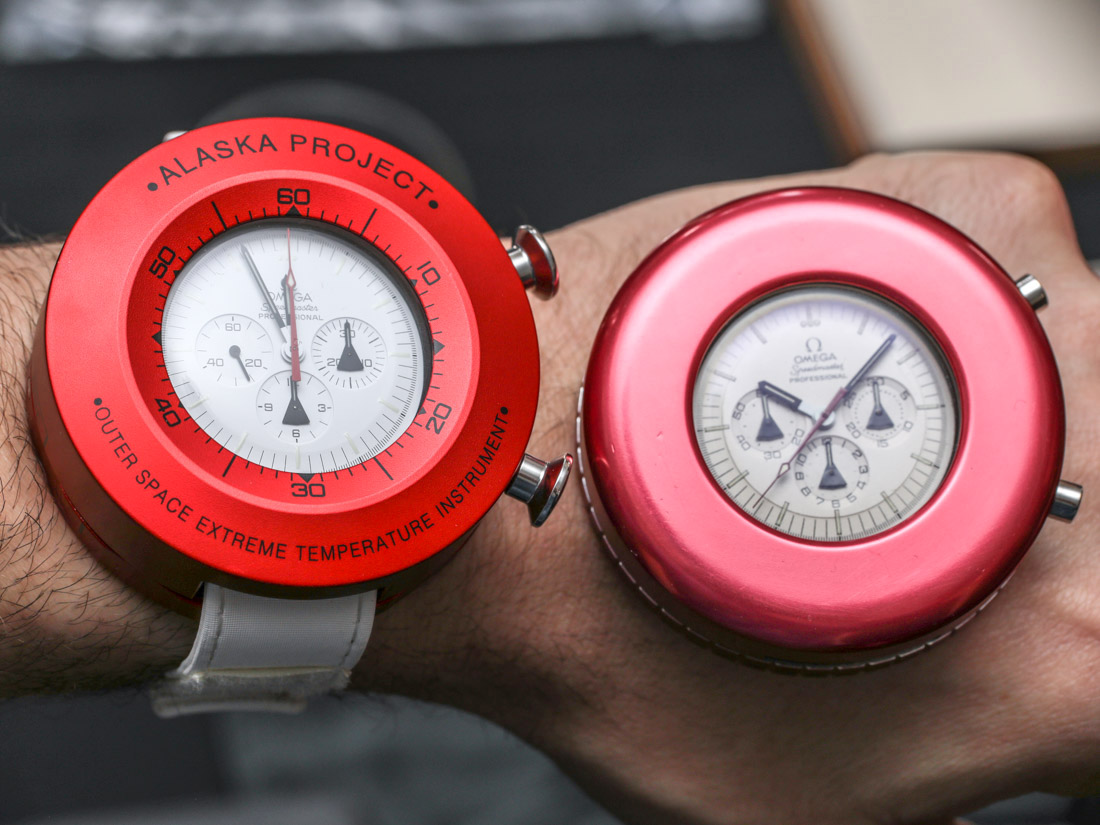
The Alaska Project: Omega Prototype Speedmaster “Moonwatch” ST 145.022
Characterized by its special red aluminum protective case, but also special for its unusual dial and hands, the Omega Speedmaster Alaska Project is a Speedy like no other – and there’s quite a story to go with it as well. Launched well before the Apollo 11 mission, “Alaska Project” was the codename of a project that Omega was working on secretly “to create the perfect space watch.” The code-name “Alaska” had nothing to do with the cold temperatures of the American state, but was chosen to ensure that this secret project would remain as elusive as possible in case of any industrial espionage.
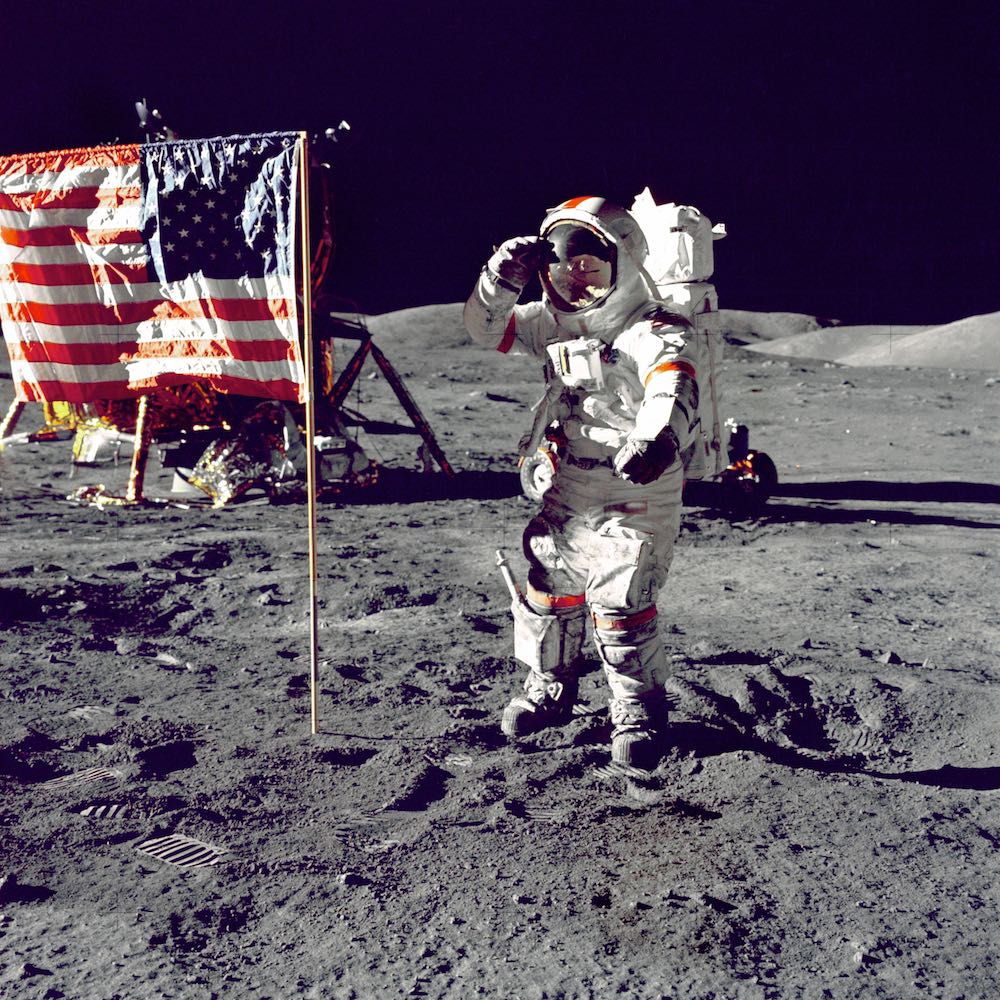
On the 17th of December 1972, Eugene “Gene” Cernan became the last man to leave a footprint on the Moon – strapped onto his left arm, near his elbow, was an Omega Speedmaster
Omega went on to produce a series of prototypes, all of which were proposed to NASA in a project that would span many years. Following NASA’s cancellation of the Apollo missions after Apollo 17 (missions 18 through 22), there was no immediate use for the Alaska Project’s prototypes and so the project was temporarily terminated even though some noteworthy progress had been made. This first phase of the development Omega called “Alaska I” as, on the 17th of December 1972 at 21:33.24 GMT, Apollo 17 landed on the Moon and Eugene “Gene” Cernan, with an Omega Speedmaster chronograph on the wrist, became the last man to leave a footprint on its surface.
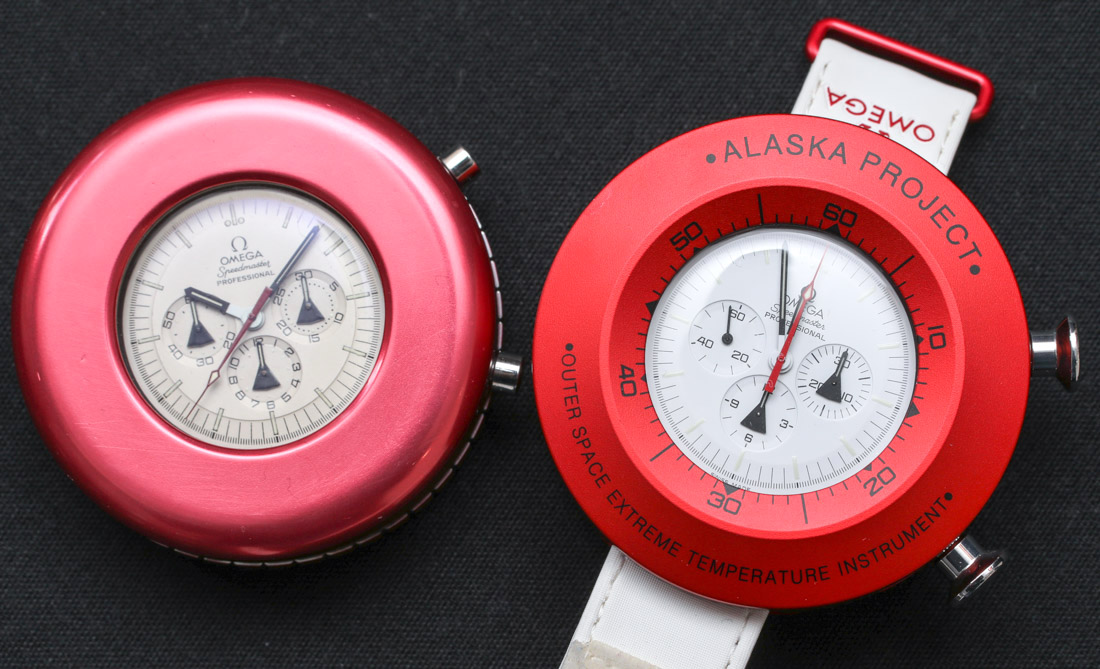
Well before this moment, in 1970, Omega began work on a continuation of its secret project titled (you guessed it) “Alaska II.” The project involved several studies and prototypes, and one of the few “Alaska II” test-watches is this very piece on the left above. A piece closely related to the Speedmaster Professional that involved fewer changes than the earlier project of 1969, it paired most of the tested technologies of “Alaska I” – including the white dial and the red anodized aluminum outer protective case – with the trusted and well-known Speedmaster “Moonwatch” case of the then-current reference ST 145.022. While Omega claims it had made considerable progress in achieving greater durability, because the Apollo Program had come to an end by the end of 1972, the “Alaska II” test-watches were not retained by the program office and the series of Alaska Projects once again came to a halt.
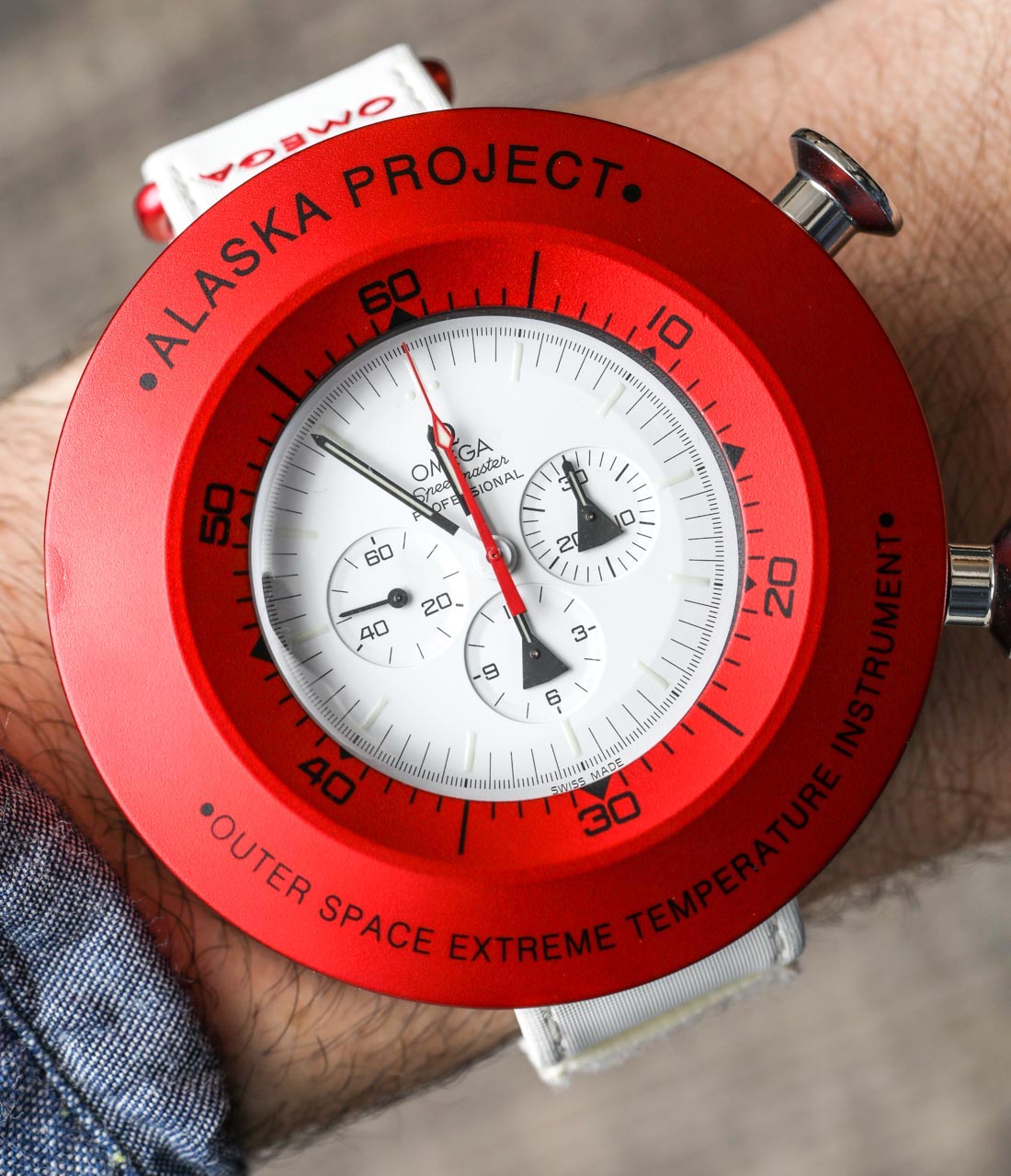
Still, Omega has created a limited edition, titled Omega Speedmaster Moonwatch Alaska Project – probably the most unusual serial-produced, yet affordable Speedmaster ever to hit the market. Launched in 2008 in a run of 1,970 pieces, the reference 311.32.42.30.04.001 was a modern take that retained the white radial dial and the red outer case that you could easily remove to reveal the classic Speedmaster case underneath. Read Ariel’s full review of the quite rare and quite awesome Alaska Project here.

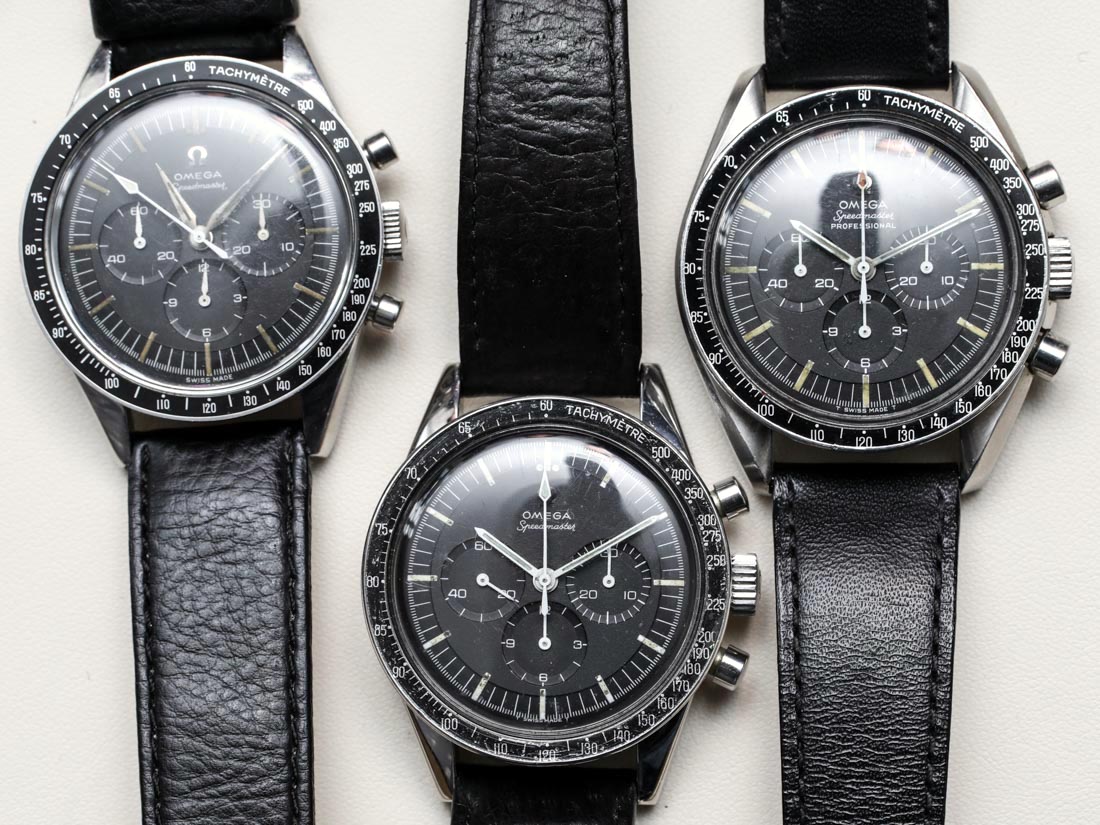
Omega’s event celebrating the notable 60th anniversary of the Speedmaster and displaying these six pieces in particular allowed for yet another glimpse into the cool and extremely complex world of the Speedmaster. Admittedly, one can spend ages learning these minute details as the Speedmaster advanced from a motor-racing-themed chronograph of the ’50s into the Moonwatch that is celebrated so much today… A good place to start, apart from reading all that we’ve written about the Speedmaster here, is to give the Moonwatch book a go that we reviewed here, since it has tons more details on the watch and the seemingly innumerable references that came to be over the last six adventurous decades. omegawatches.com


